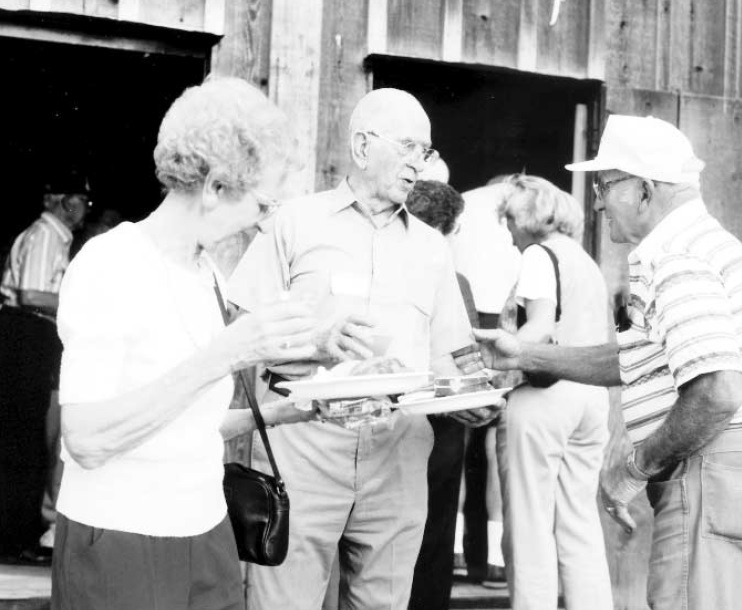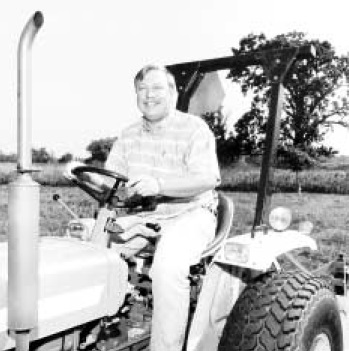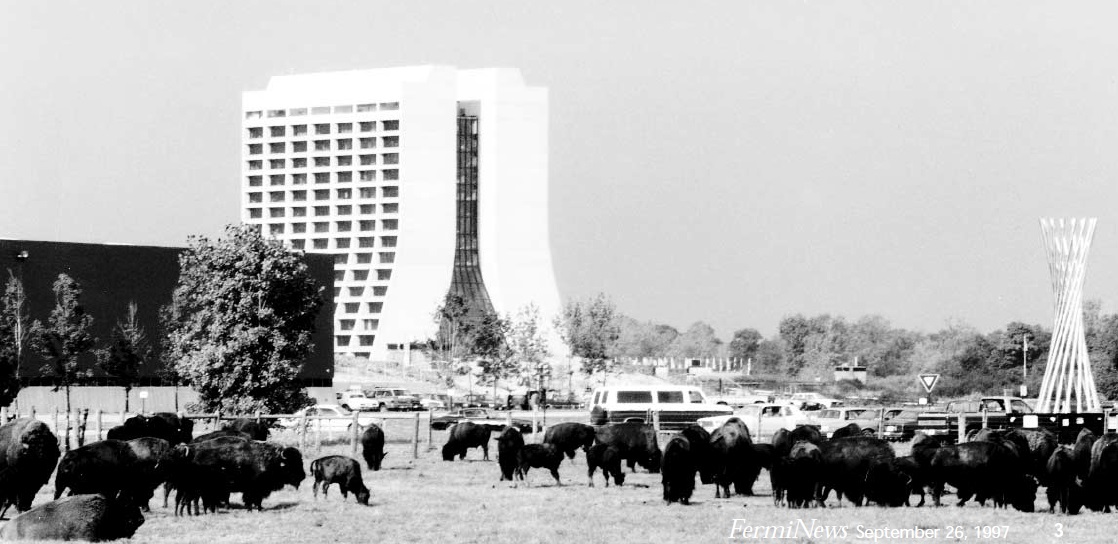Fermilab Fêtes Former Farmers
Site’s former residents return for an open house in their honor.
The Erdmann family sold eggs at the end of Wilson Street. The Baumanns raised beef and hogs on Kautz Road. And the Feldotts farmed the land now occupied by CDF, the Collider Detector at Fermilab.
On Saturday, September 6, the Erdmanns, the Baumanns and the Feldotts—lots of Feldotts!—along with more than a hundred of their former neighbors returned to the land they once farmed, for a first-ever Fermilab open house held in their honor. They spent the sunny afternoon touring the Laboratory and reminiscing with old friends and relatives about life on the site before the arrival of the National Accelerator Laboratory, later renamed Fermilab, in 1974.
“I suspect our arrival here 30 years ago may have been somewhat intrusive for you,” said Fermilab Director John Peoples in his welcoming remarks, raising loud, if rueful, laughter from the audience. Many of the farm families displaced by the Laboratory used the proceeds from the sales of their farms to purchase new farms in the area. Peoples noted the pace of change in the three decades since the Laboratory’s arrival, but said that some things remained constant.
“One thing that hasn’t changed on the Fermilab site is regard for the land we live on,” Peoples said. “As farmers, you cared for and respected the land that supported you and your families. As a laboratory, we have continued that respect and regard for the land.” Peoples noted the role of Fermilab prairie specialist Bob Lootens, son of a former Fermilab farm family, in the restoration of more than 1,000 acres of tallgrass prairie on the Laboratory site.
Later, Lootens greeted the returning visitors, including many members of the extended Lootens clan, at the former Baumann barn, one of three stops on a bus tour of the site for the guests. Lootens explained the old barn’s new role as the storage area and processing site for seeds of Fermilab’s annual Prairie Harvest. Grandchildren of farm families skipped through the barn’s empty hay loft, which will soon be deep in drying prairie plants, while Lootens explained the Laboratory’s prairie restoration project to their elders.
Next stop for the tour buses was CDF (renamed, for the day, “Collider Detector at Feldotts’”). Fermilab physicist Peter Limon explained the workings of the 5,000-ton particle detector, where in 1995 the top quark made its first appearance since the Big Bang. Leon Feldott, now of Elburn, Illinois, expressed satisfaction that the elusive quark chose the Feldott farm for its birthplace.
“It couldn’t have picked a better spot,” he said.
“The farmers asked great questions,” Limon said later on the warm afternoon. “They didn’t want to leave. Or maybe it’s because it was air-conditioned in the assembly hall.”
Finally, fellow Fermilab prairie expert Mike Becker introduced the visitors to Fermilab’s famous bison herd, grazing in a former Feldott pasture.
At the end of the afternoon, visitors and their Laboratory hosts met at the former Kuhn barn, now a center for Laboratory gatherings, for a chicken barbecue and an opportunity for some serious visiting. Neighbor recognized neighbor, sometimes after a decades-long interval.
“Look honey,” said Corliss Weaver, niece of former farmer Art Schimelpfennig, perusing a copy of FermiNews, to her husband. “There’s a picture of Rod Oxe. He was the ring-bearer at our wedding.” Oxe, now a member of Fermilab’s Fire Department, grew up on a farm on the site.
Some guests took special tours of the homes they once occupied, now devoted to Fermilab housing and office space.
“Ellen called and told me to clean up the house because we were having visitors,” said former Fermilab Director Leon Lederman. His wife informed him that members of the White family, the site’s former residents, would be arriving to see their old home, Lederman said. “So I did some dusting and sweeping.”
Peter Erdmann, formerly of Wilson Street, introduced himself to Fermilab’s Becker, the afternoon’s buffalo guide.
“We used to sell eggs,” Erdmann began.
“I know,” Becker interrupted. “My Dad and I used to stop at your farm every week to buy eggs when Mom told us to.”
Adelaide Nelson, now of Batavia and a descendent of farmers who first arrived on the Fermilab site in 1868, voiced the views of many fellow guests about returning to the place they had to leave 30 years ago.
“We felt bad at the time,” Nelson was quoted as saying in a local news account of the event, “but I’m thrilled to pieces now, because if Fermilab wasn’t here it would just be houses and houses and shopping malls.”






